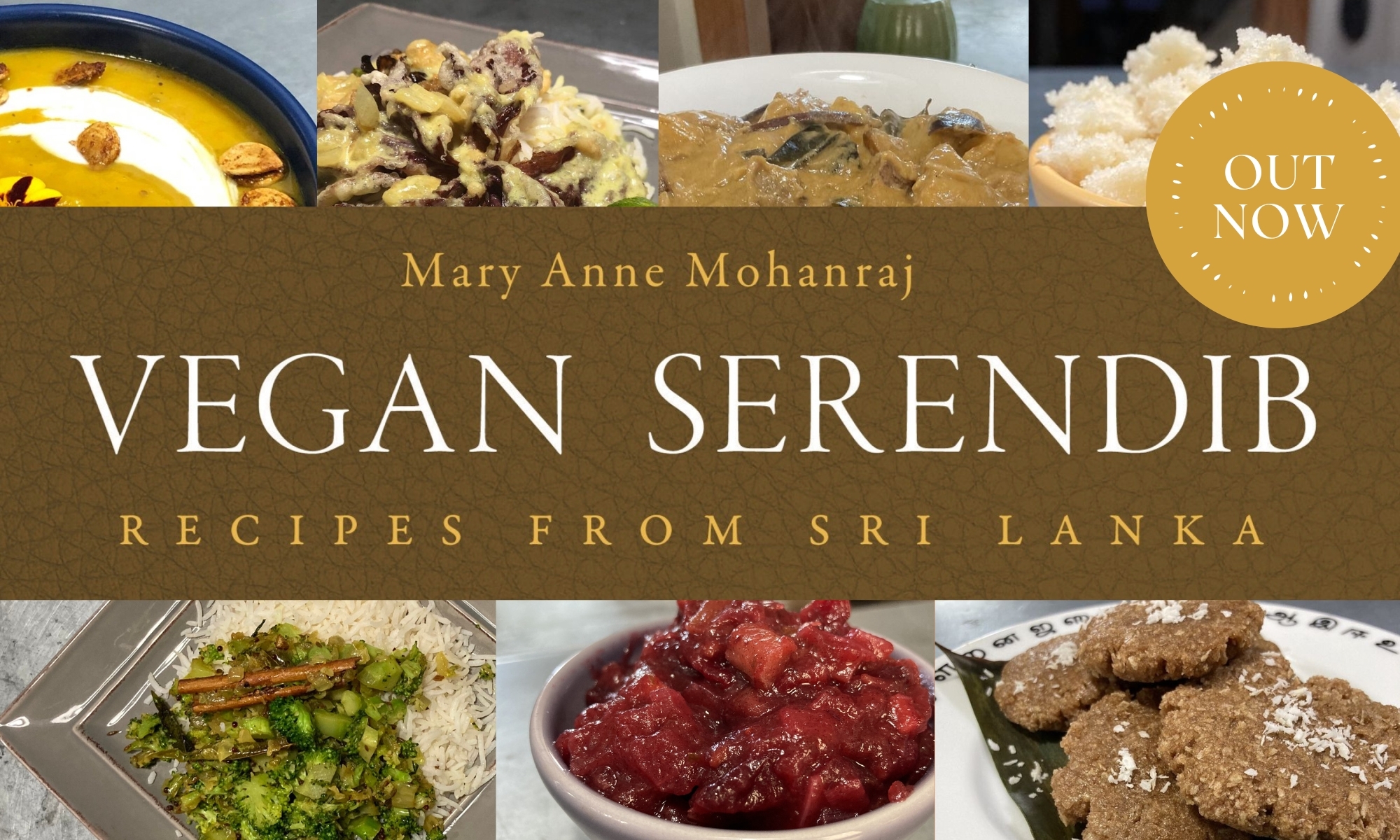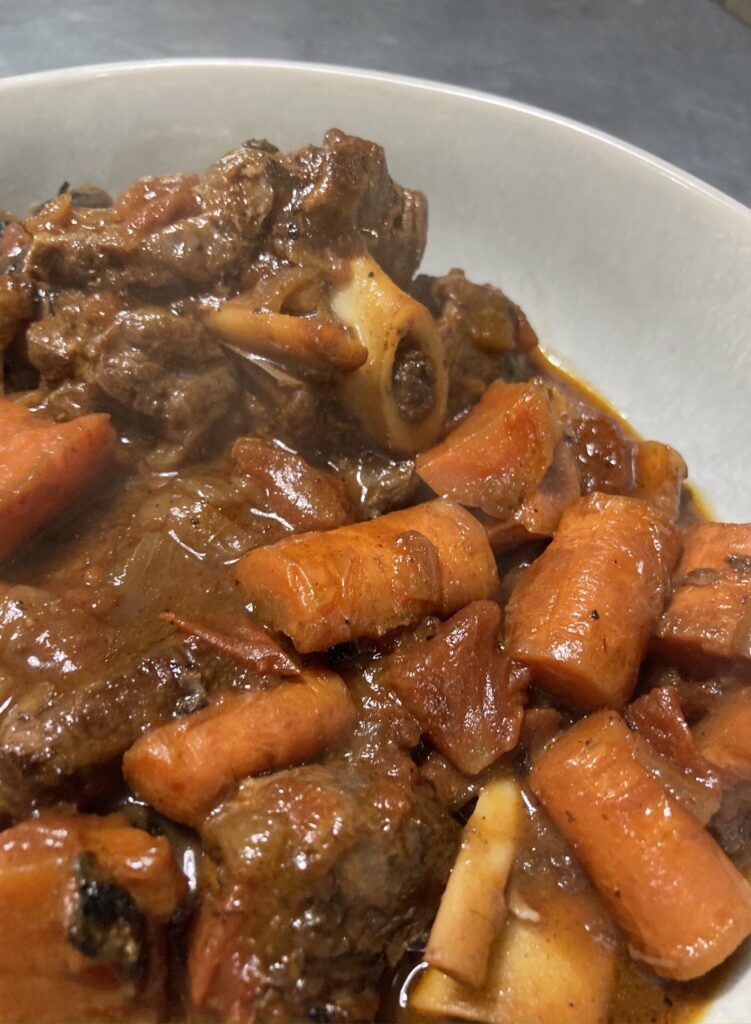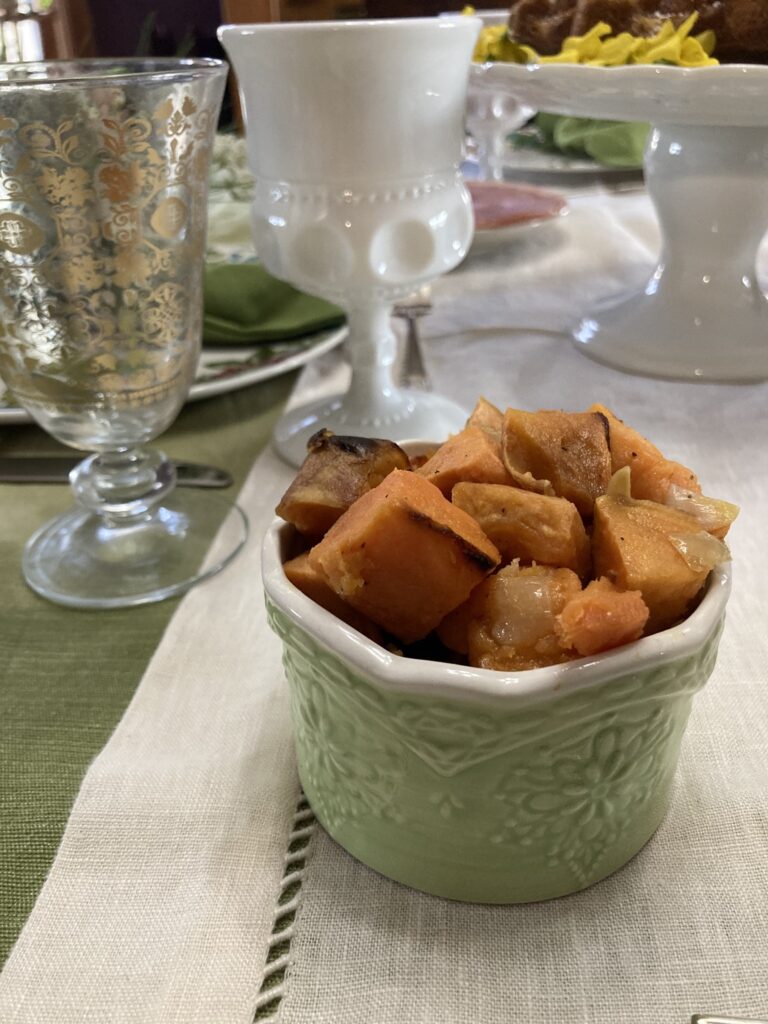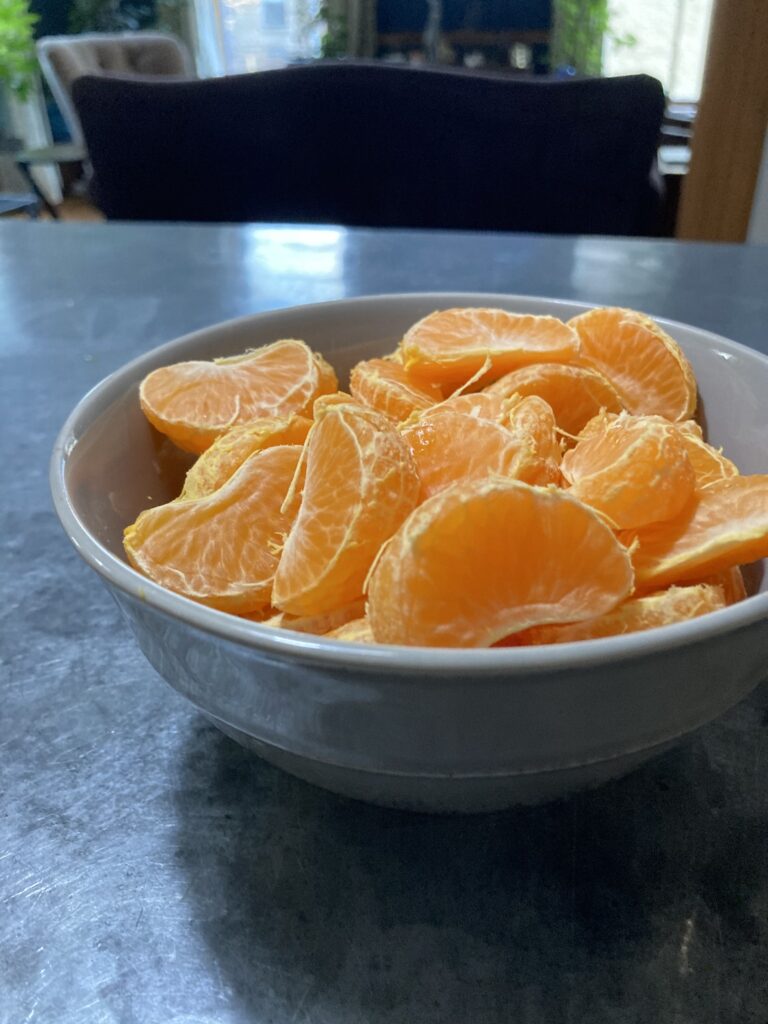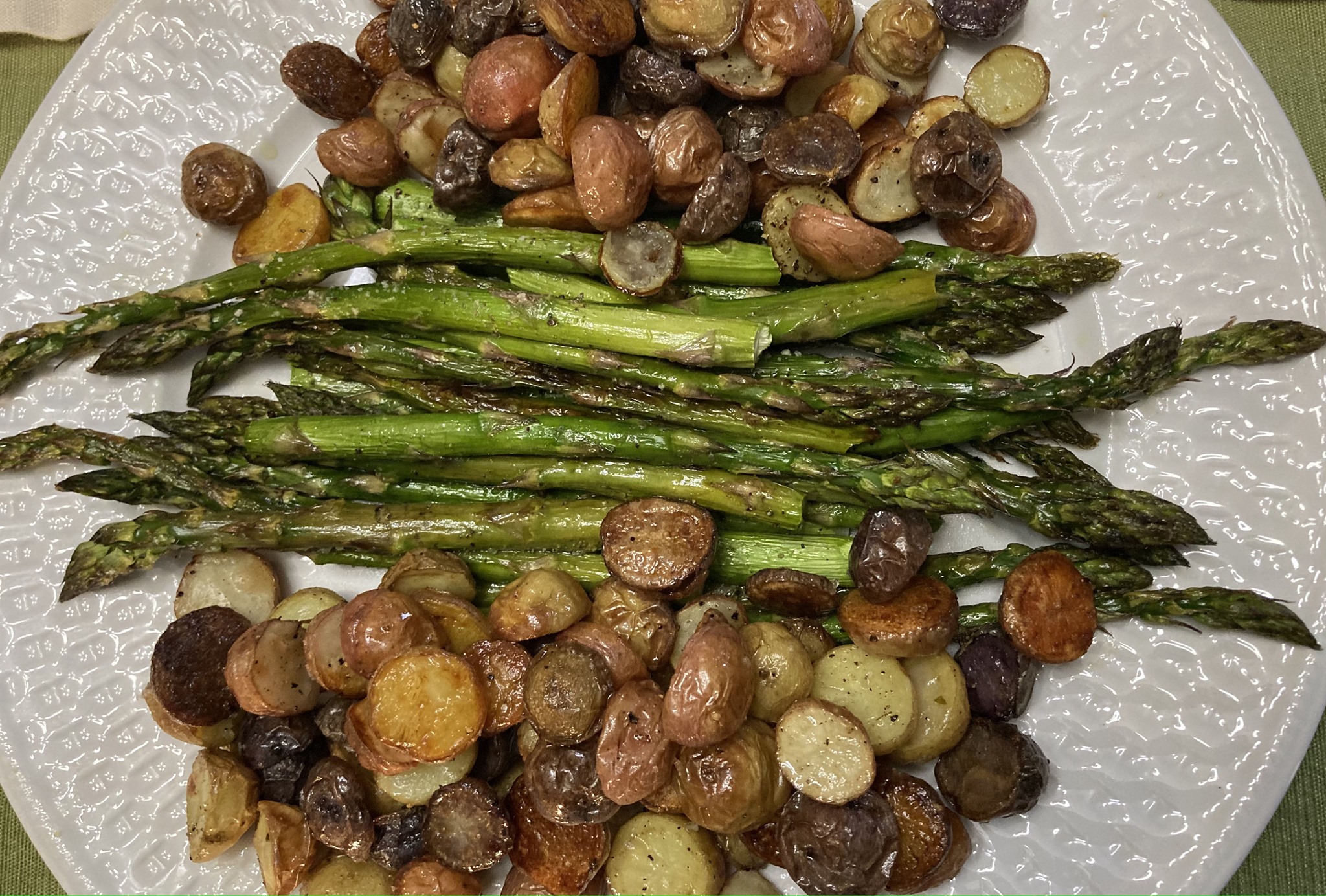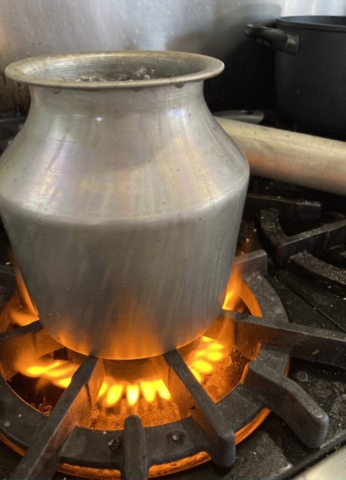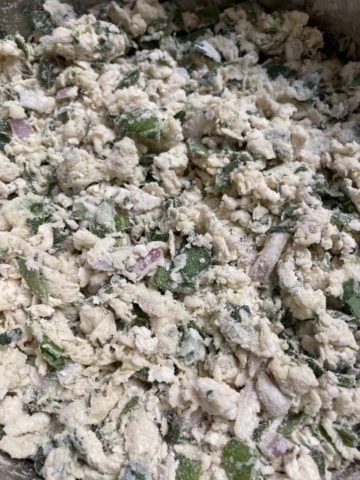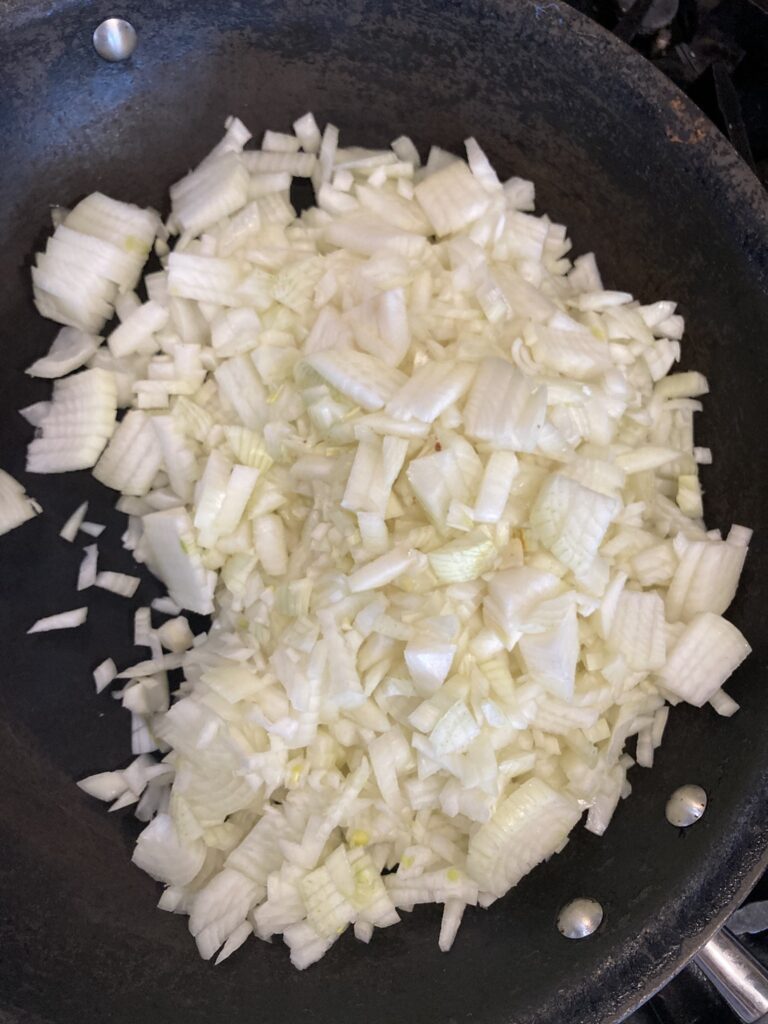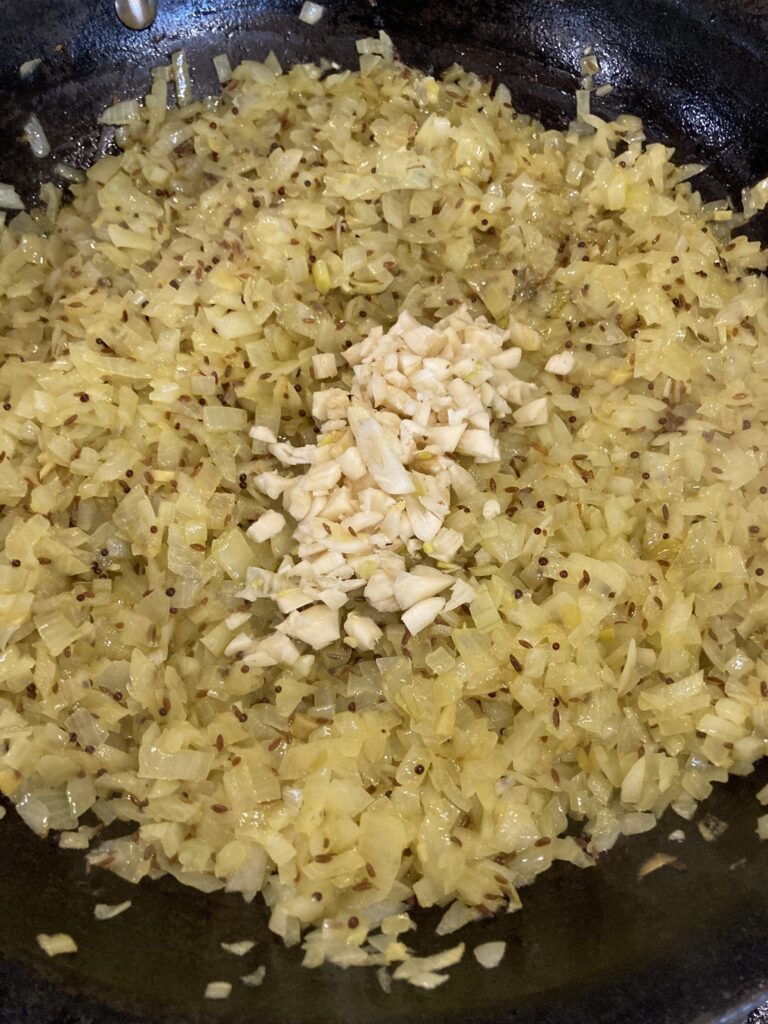(30 minutes, serves 4)
This is one of the prettiest Sri Lankan dishes — the color is sure to delight dinner guests and children. It’s healthy too! Yams are good for you, and so is coconut milk; you can feel happy serving this dessert to one and all. Irasavalli is also often eaten for breakfast, in the same way as a rice congee (or oatmeal).
Purple yam (Dioscorea alata), also known as ube (Philippines) or isu ewura (Nigeria), is native to Southeast Asia. It can be found fresh and frozen in your local Asian grocery stores.
1 drop rose essence, or pinch of cardamom (optional)
1. In a saucepan, combine yams, coconut milk, and water. Bring to a boil and cook ten minutes, stirring occasionally, until yams are cooked through.
2. Remove from heat and either mash with the back of a wooden spoon, or use a blender (an immersion blender makes it easy) to puree the yam and combine it with the coconut milk.
3. When well blended, return to heat, add remaining ingredients, and simmer 10-15 minutes more, stirring, until pudding is thick and starting to pull away from the sides of the pan.
4. Serve hot, with your choice of garnishes — ripe banana, ripe mango, coconut flakes are all good options.
NOTE: If you’re using frozen yams, they may have lost some color in the freezing process. If the purple is not sufficiently purple for your delight, do feel free to add a drop or two of food coloring.
